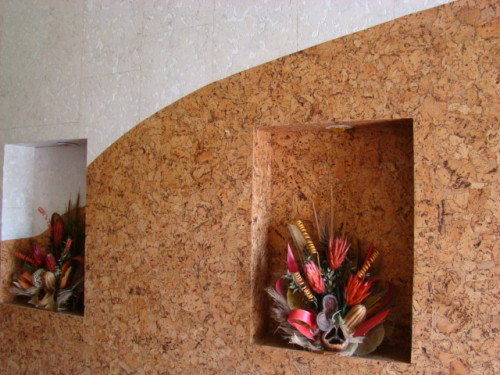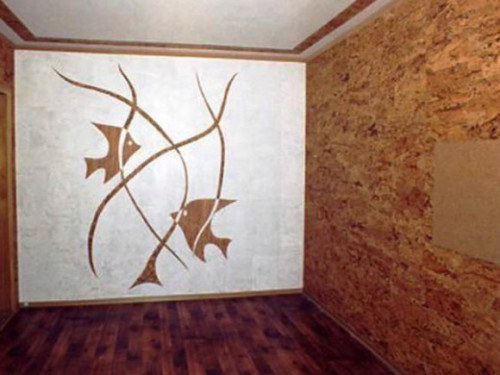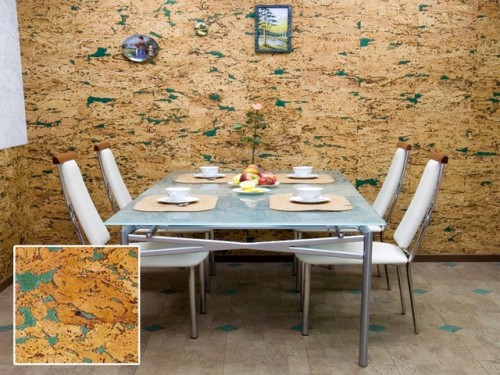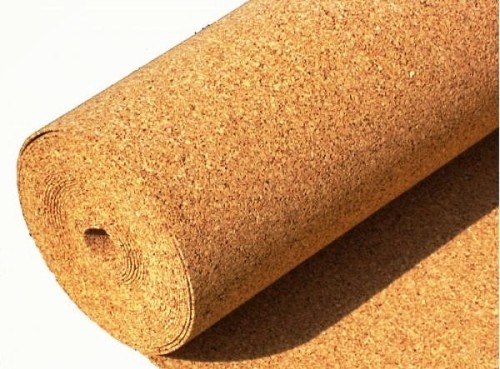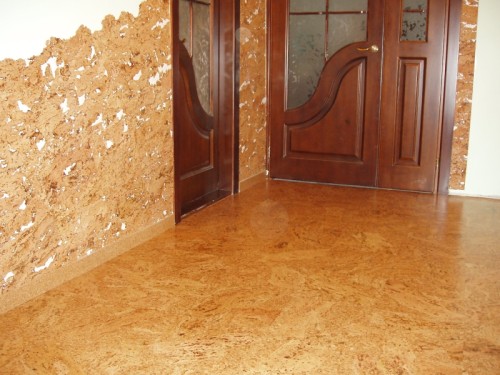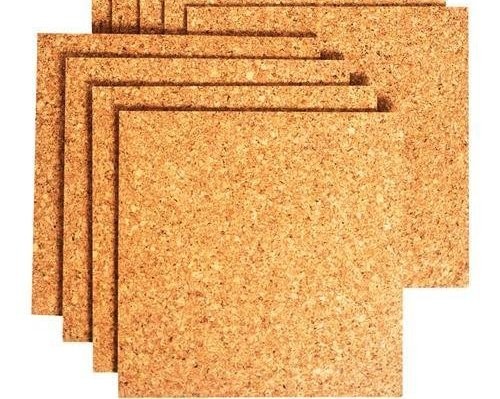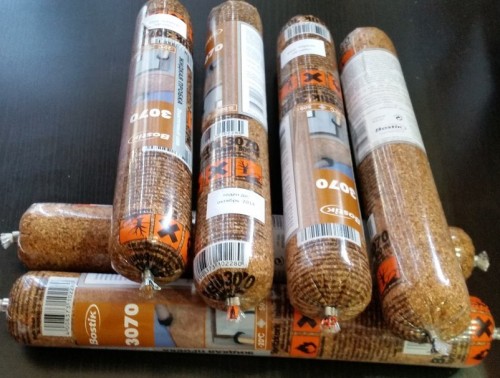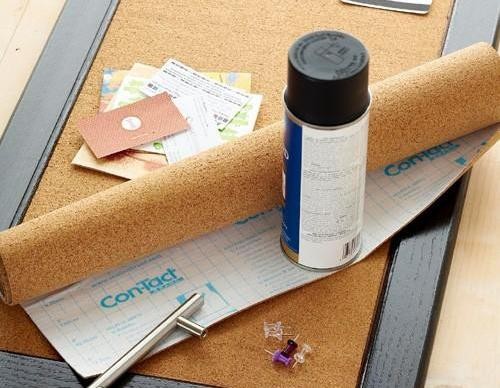
Trimming trimming Walls
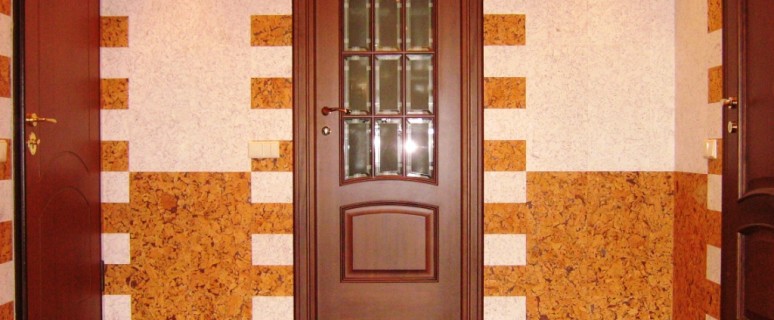
Many owners of houses and apartments want to finish with environmentally friendly materials. They are safe for the health of residents. Therefore, today there are more and more similar eco-friendly suggestions in the building materials market. One of the most sought-after natural materials is the cork. It is usually mined from cork of cork oak, which grows in Mediterranean countries. We will talk about the advantages and nuances of the trim walls of the walls in this article.
Content
Product specifications
It is worth noting that the boron for further processing is produced rather gentle for the wood. This valuable natural material is removed from the surface of the tree only manually. At the same time, the removal date is displayed on the spot. It becomes a kind of label for the next similar procedure, which is usually carried out no earlier than after 8-10 years. The duration of the oak itself is approximately 230-270 years. After the recovery period, each next layer gives a smoother and beautiful bark. Therefore, the older the tree, the more value the material is mined from it. The color gamut of the crust of these trees is quite diverse. Therefore, buyers may pick up a shade that they most to taste.
The plug is a unique natural material that has many advantages. Note the most important of them.
- So, his main plus is that it is natural material. Dust does not accumulate on this coating, since the plug has antistatic properties.
- The material does not make any unpleasant odors.
- It is still worth noting the small proportion of this material, which is why it easily holds on the surface of the water. Therefore, it is successfully used to produce fishing accessories.
- The plug for walls is quite elastic, but at the same time flexible and malleable material. Therefore, after deformation, it is able to restore the original shape.
- Cork slabs prevent the passage of gas and water vapor. This is achieved due to the presence of subverin material in the structure. Therefore, the cork coating for the walls is not so susceptible to rotting and deformation, like other products made of wood.
- It is also worth noting that this material has low heat and sound conductivity. But in order for this to be noticeable, the entire surface of the wall is to bind cork tiles. In any other case, the effect of sound insulation will be irrelevant.
- In addition, this coating is quite durable and wear-resistant. At the same time, it has a sufficiently large friction resistance.
- For people prone to allergies, it is important that the plug is an environmentally friendly, safe, natural and hypoallergenic material.
- It is even important that this material does not absorb fat, soot and acetone. Does not highlight with no harmful substances during operation.
- In addition, this material is easily mounted, and it is easy to care for it. It is important that when mounting works, the cork tile is stacked into the joint.
- It is believed that cork material is a good heat insulator, which allows you to reduce heat loss with the help of it. However, it cannot be put in a row with other materials, which are specifically designed for thermal insulation. She is visibly inferior to them.
There are also disadvantages of this material, but there are few of them. First of all, the "weak side" is a high price. But the cost of the plug, depending on its type, structure and shape, differs. Therefore, anyone can choose the appropriate option for yourself under its budget. In addition, all the advantages of the cork coating pays for costs pretty quickly. Therefore, think before choosing some other material for finishing.
How to choose Material
Before starting the installation, you need to correctly choose the material. It is recommended to choose, pushing out the type of surface that needs to finish. Most often use cork wallpaper or cork tiles. In any case, the work will have its own characteristics, and both internal and with external facing. Wallpaper on a paper basis is best glued together. The fact is that glue makes the canvas wet, because of which it becomes fragile and can break in the process of sticking. Muffcit cork canvases that do not have a paper base, usually glued even more difficult. Not to do without the help of specialists.
Wall finishes with a cork with their own hands - an easy task. This uses the following options:
- Cork tile. It is a dense material with a thickness of 3-5 mm. It has a special moisture-resistant coating. In some cases, sheets of greater thickness are used. As for the modular tile, it is worth noting that this material has reliable protection from varnish and wax. Such tile is well suitable for lining of walls in rooms with high humidity. When choosing a wall cork covering, it is necessary to choose exactly the type of product, given the features of the available room. From how correctly the choice is made, the wear resistance of the material during operation depends, as well as the complexity of the installation work. In addition, it affects the final cost of the finishing process.
- Often, the so-called rolled plug for walls is used for decoration, which is made of crushed granules. In this case, no synthetic substances are involved. Therefore, such a finishing material is environmentally friendly. It is produced in the form of rolls. And they have a natural natural look, without prior decoration. Characteristics can be improved. For this, the surface is processed with varnish or wax. The wall decoration by this material has a lot of advantages. One of them is to obtain a homogeneous surface, which is due to the fact that when laying the walls of the plug does not appear horizontal seams. The coating thickness varies from 1.4 to 2.2 mm. This characteristic makes this material well combined with the familiar wallpaper.
- The most affordable cladding material are corkscrew wallpaper. Their main is a dense paper fabric. From above, it is processed by various protective agents and varnish, and then coated with a layer of veneer (its thickness is approximately 1.1-1.5 mm). Such web, as a rule, are produced with dimensions of 500 to 80 cm. They are glued in almost similar, like other dense wallpaper. When pasting, the most important thing is not to exercise them, otherwise, cracks, bends and chips may appear on the surface.
- Another species are cork slabs that are sometimes called cork sections. They are special panels. They consist of two layers, which are interconnected by means of glue based on natural components. The first layer performs the role of the substrate and consists of a finely chopped cork with a thickness of about 1.3-1.5 mm. The front side of the tile is made of cork veneer extracted by a natural natural way, a thickness of about 1.2-1.3 mm. Similar plates have standard dimensions.
- There is still a liquid cork. It is mainly used for outdoor wall decoration. This material is 95% composed of small cork chips, and the remaining 5% is acrylic bonding components. Due to the porous structure, such a cork coating has unique moisture protection properties. The liquid cork is usually applied to the surface with a sprayer. At the same time hid and eliminate joints and small irregularities of the walls. The thickness of the coating from the liquid cork can be up to 2.8 mm. At the same time, the walls trimmed by this material are better preserved heat and less skip noise. Next, we consider in more detail how to glue a plug on the walls.
How to stick a plug on the walls
For work, you will need:
- contact glue
- capacity for glue stirring,
- cork itself,
- building level,
- scissors,
- knife,
- a ruler for measurements
- putty knife,
- velira rollers for processing joints.
Contact glue is capable of fixing the cork slabs as much as possible on the surface. The fact is that they glue from all sides, i.e. The surface of the wall and the material itself. As for the cork itself, it should be noted that, depending on climatic and temperature conditions, it can change its shape and size. Therefore, before laying it is necessary to give the material to lie down in the room for about a day.
The procedure for conducting facing works:
- Before starting work, you need to pull the panels from the packaging and, as mentioned above, leave them about a day in the room where they will be mounted. Thus, the material will get used to the existing conditions, and will not be deformed.
- Installation of cork coatings something resembles the process of sticking of ordinary dense wallpaper. The surface is perfectly cleaned from dust, dirt, remnants of other materials.
- Mount the cork coating is necessary only on a predetermined and aligned surface. Next, the wall must be projected. After that, it should be noted the place where the material will be stacked.
- To make the markup properly, it is necessary to use a construction level and a plumb. This will allow you to find a central point on the wall, where the first mark should be set.
- After that, you need to read the two passing through the center of the line. Moreover, they must divide the plane on equal halves horizontally and vertical.
- Then you need to take the panel and attach it carefully to the intersection of the marked lines. It outlines all over the contour. Next is applied with a thin layer.
- First of all, pasting is carried out near the window opening. It is important that the material is set to join. In this case, you can use any adhesive composition that is suitable for dense wallpapers on a paper basis. Glue for cork on the walls is best to apply brush or a small roller.
- The joints are processed by a special roller intended for these purposes.
- When the glue is applied, you need to withstand it within a few minutes, after which you can install the layer of material and press it tightly to the wall.
- Such glue is usually at least two days, and then its remnants are cut. This can be made with an electric bike or sharp knife.
- Panels should be glued together after each other, taking into account the protrusion of the previous and subsequent sheet of material.
- When sticking is finished, you need to take a roller and walk on the sheet of material. This is necessary so that the joints are securely aligned and the corners did not go away in the future.
- Special attention should be paid to the finish and design of angles and joints. To do this, you need to perform preliminary measurements. And the finishing layer needs to stick with a little naughty.
- To install sockets and switches to install the settings, you should use pre-prepared cardboard patterns. With the help of them, the holes according to the measures taken earlier are cut.
Care rules
Wall-mounted cork coating is less often damaged during operation, rather than the floor, but this does not mean that it does not require care. So, to protect the material from premature deformation and wear, the composition of oil and wax are used. This means can significantly improve the characteristics of the cork surface, in particular, makes it more moisture-resistant. Thanks to this, the plug can be made even in the bathroom and in the kitchen, where, no secret, humidity is usually higher than in other rooms. To protect the surface as an alternative to oil compositions, an acrylic varnish on a water basis can also be used. Most importantly, remember that it is impossible to cover the cork with parquet varnish.
Such a coating during its operation does not need special care. It is enough to periodically wipe the surface with a damp cloth. From detergents, any, except those in their composition contain solvents and abrasives.
Do not forget that the plug refers to the number of natural materials that are susceptible to sunlight. Due to the overaffect of sunlight, the coating can burn and lose its natural color. Sometimes the plug can even dry, due to which the size of the material will change. If it still happened, it is recommended to maintain a humid mode in the room. And be sure to hang on the windows of the curtains or dense curtains.




